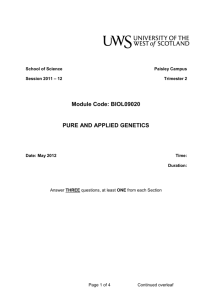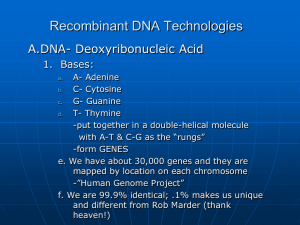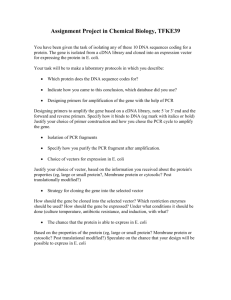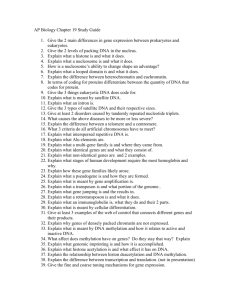Guidelines on the Preparation and Printing of Examination Question
advertisement
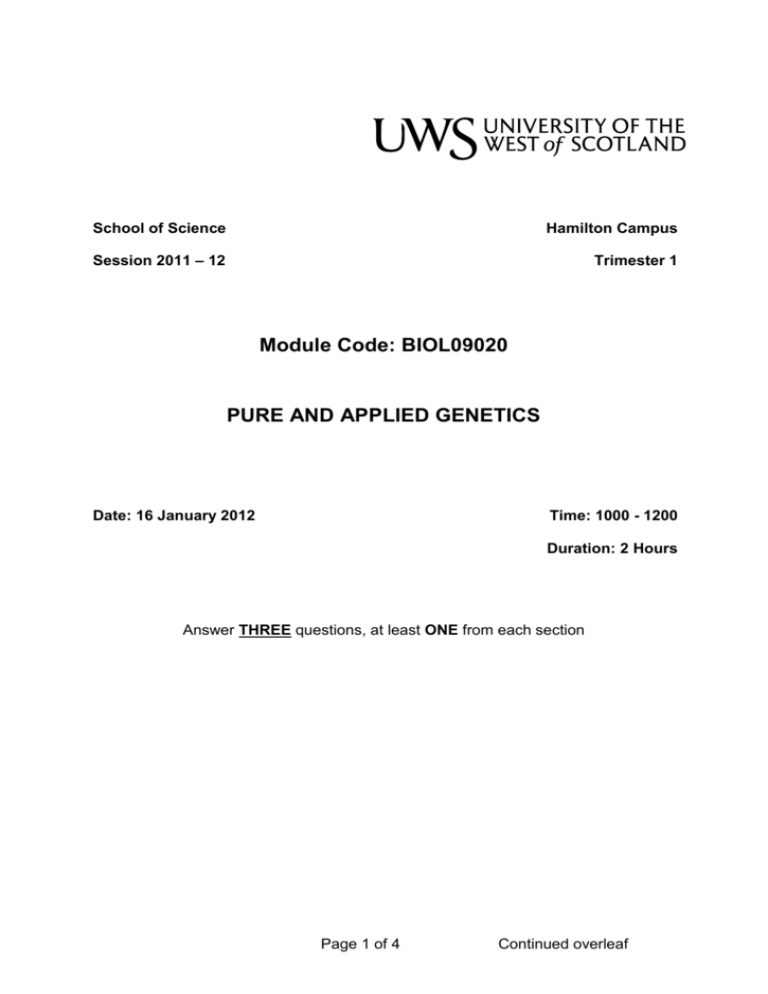
School of Science Hamilton Campus Session 2011 – 12 Trimester 1 Module Code: BIOL09020 PURE AND APPLIED GENETICS Date: 16 January 2012 Time: 1000 - 1200 Duration: 2 Hours Answer THREE questions, at least ONE from each section Page 1 of 4 Continued overleaf BIOL09020 January 2012 Section A Answer at least one question 1. a) Discuss the features of the plasmid pUC18/19 (Figure 1) which make it a good vector for cloning DNA in bacterial cells. b) Describe the steps you would perform to clone a DNA fragment in E.coli using the vector in Figure 1. Figure 1 Page 2 of 4 Continued overleaf (6) (14) BIOL09020 January 2012 Section A Continued 2. 3. You are studying a gene coding for an enzyme that breaks down toxins which are harmful to the cell. a) Describe how you would use the polymerase chain reaction (PCR) to amplify the gene from genomic DNA. (12) b) Outline how the basic PCR technique can be modified to determine if the gene is expressed after exposure to toxins. (8) Two types of genes, oncogenes and tumour suppressor genes have been shown to play a role in the development of cancer. Discuss the normal function(s) of these genes in the cell and examples of mutations that can lead to cancer. (20) Page 3 of 4 Continued overleaf BIOL09020 January 2012 Section B Answer at least one question from this Section 4. a) Compare and contrast the content and organisation of the genome in prokaryotes and eukaryotes. (10) b) Outline why the ends of linear chromosomes get shorter during successive rounds of replication in eukaryotes. (4) c) Discuss the effect telomere shortening has on the cell and describe the mechanism some cells have developed to overcome this shortening. (6) 5. Discuss the events that occur at the level of transcription when E.coli is grown on a mixture of glucose and lactose. (20) 6. Three types of RNA are involved in Translation (Protein synthesis) discuss the role and interaction of all three. (20) END OF QUESTION PAPER Page 4 of 4

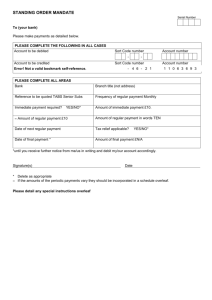

![Instructions for BLAST [alublast]](http://s3.studylib.net/store/data/007906582_2-a3f8cf4aeaa62a4a55316a3a3e74e798-300x300.png)
